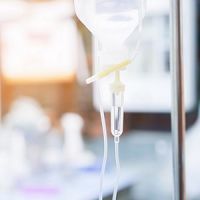Vitamin D deficiency – usually defined as 25(OH)D levels below 20ng/ml – is common in critical illness with prevalence between 40-70%. Many observational studies have shown a link between low vitamin D levels and poor clinical outcomes in critically ill adults and children, including excess mortality and morbidity such as acute kidney injury, acute respiratory failure, duration of mechanical ventilation and sepsis, according to a review article in the journal Endocrine Connections.
In addition, three different meta-analyses confirm that patients with low vitamin D status have a longer ICU stay and increased morbidity and mortality. The article notes: "It is biologically plausible that vitamin D deficiency is an important and modifiable contributor to poor prognosis during and after critical illness."
The article cites a number of factors for being or becoming deficient in the ICU, including pre-existing malnutrition and disease. Also, vitamin D metabolism is dysregulated in some critically ill patients with vitamin D levels rapidly falling after ICU admission.
"Hepatic, parathyroid and renal dysfunction additionally increase the risk for developing vitamin D deficiency. Moreover, therapeutic interventions like fluid resuscitation, dialysis, surgery, extracorporeal membrane oxygenation, cardiopulmonary bypass and plasma exchange may significantly reduce vitamin D levels," the article explains.
Among possible markers, serum total 25(OH)D is currently considered to be the best marker of vitamin D status. Measurement of vitamin D concentration is currently not routine practice on ICU and there is currently no consensus on definition on vitamin D deficiency in critical illness.
Generally, progress has been made in the last years in the harmonisation of various assays, according to the article, adding that further standardisation (e.g., the definition of vitamin D deficiency and measurement of other possible markers of vitamin D status) would be sensible.
In the general population, it is recommended that all healthy children and adults meet a daily minimum requirement of vitamin D – the Institute of Medicine (IOM) recommends 400 to 800IU of vitamin D3. The Endocrine Society increased this dose to 1500 to 2000 IU/day for individuals at risk of deficiency.
Current standard enteral nutrition formulas used in critical illness contain vitamin D2 or D3 (native vitamin D, half-life 2-3 weeks), but rarely more than 400 IU in a daily regime.
"There is however a biological rationale that active vitamin D on top of high-dose vitamin D3 could be of additional benefit," the article points out. "Besides patients with chronic pre-existing renal dysfunction, many other ICU patients appear to be unable to sufficiently activate native vitamin D to its physiologically active form calcitriol." So far, no trial has looked at a combined vitamin D regime.
Notably, many single vitamin D intervention trials have given disappointing results and many more, even relatively large trials including the recently completed VIDA and awaited VITAL trial are/will likely be negative. "A great issue in these studies is that despite their relatively large size including thousands of individuals, they still are underpowered. Even more problematic, they have not exclusively included vitamin D deficient subjects. It is not reasonable why patients with normal vitamin D levels are included in intervention trials; moreover, vitamin D should ideally not be given in the placebo group," the article explains.
Although less than 800 patients have been included in randomised controlled trials (RCTs) worldwide, the available data suggest that high-dose vitamin D supplementation could be beneficial.
"Two large RCTs in Europe and the U.S., together aiming to recruit > 5,000 patients, have started in 2017, and will greatly improve our knowledge in this field," the article says. "Importantly, vitamin D testing and supplementation is readily available, safe, and inexpensive and could be rapidly implemented into clinical practice if the ongoing trials show benefit."
Source: Endocrine Connections
Image Credit: iStock
References:
Amrein K et al. (2018) Vitamin D and critical illness: what endocrinology can learn from intensive care and vice versa. Endocrine Connections. Accepted manuscript, Published online 01 October 2018. DOI: https://doi.org/10.1530/EC-18-0184
Latest Articles
vitamin D, critical illness, ICU
Vitamin D deficiency – usually defined as 25(OH)D levels below 20ng/ml – is common in critical illness with prevalence between 40-70%. Many observational studies have shown a link between low vitamin D levels and poor clinical outcomes in critically ill a



























